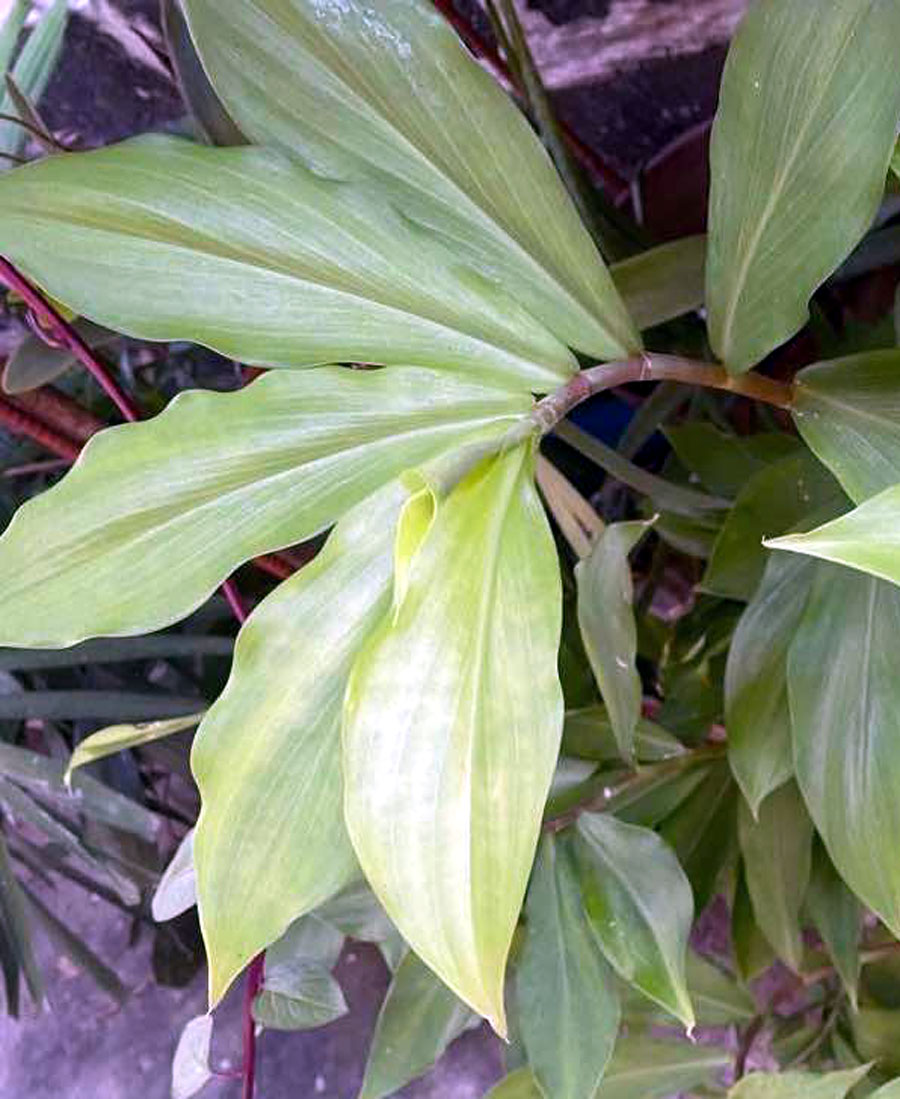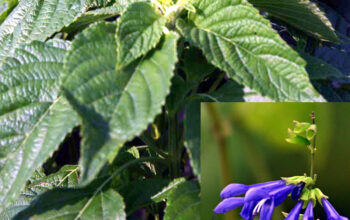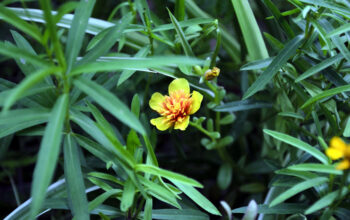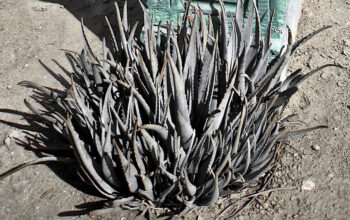Insulin Plant (chamaecostus cuspidatus)
A herbaceous plant of the family Costaceae, Chamaecostus cuspidatus, is commonly known as the fiery costus or spiral flag in eastern Brazil. Due to its purported anti-diabetic properties, it is known in India as the insulin plant. Leaf extracts from this plant are widely known for their medicinal properties in controlling blood sugar levels. It is not difficult to grow insulin plants. They are easy to grow indoors with some effort. There are large, fleshy leaves on Chamaecostus cuspidatus. There is a light purple shade on the underside of these large, smooth leaves. From an underground rootstock, attractive, arching clumps of leaves grow spirally around the stem.
These plants reach a maximum height of about two feet. They have orange flowers that measure 1.5 inches in diameter. The blooming season is during the summer. It appears as if they are clusters of cone-shaped flowers.
This plant is packed with protein, iron, and antioxidants and is well known for its extraordinary influence on controlling and maintaining blood sugar levels that prevent diabetes, a disease that in the modern era is more prevalent in adults due to stress and workload.
Overview of Insulin Plant
Scientific name Chamaecostus cuspidatus
Common name Insulin plant, Fiery Costus, Spiral Flag
Plant type Herb
Sun requires Full Sun or Partial Shade
Blooming time Summer
Flower colors orange
Soil clay, sand, or acidic soil
Soil pH neutral to slightly acidic
Zone 9-11
How to Grow and Care Insulin Plant
A stem cutting or a division of the offspring can be used to grow the insulin plant both indoors and outdoors. You can propagate insulin plants through either root cuttings or stem cuttings. Before separating your plant from the mother plant, make sure it has at least 3-4 leaves on its rhizome. Dig the soil about an inch or two and plant the rhizome in a location where there is partial sun or partial shade. Stem cuttings should be about 3-4 inches long when you plant them, just like when you plant from seeds.
Sunlight
Keep an eye on the place where you plant your plants in order to reap the best foliage and keep them flourishing for the longest possible time. The plant does best when planted in both sun and shade, but this plant needs at least three to four hours of sunlight. Choose a location that has some shade as well as a flush of sunlight.
Soil
It is adaptable to different soil textures and qualities and can grow in a wide variety of conditions. Regardless of the soil texture, whether it is loose, clay, sand, or acidic, the plant can endure it. But it thrives most in soil that is rich in nutrients. Ensure the soil is well-drained and doesn’t have to waterlog. The development of nematodes and mites can kill a plant in light and sandy soil, so those mixtures should be avoided.
Add compost to the soil to improve it and ensure optimal foliage. Use fertilizer to double the soil’s potency.
Watering
Water the plant on regular basis. Typically, they need to be irrigated three to four times a week in summer and less often the rest of the year. Though the plant craves moisture, it is crucial to prevent the soil from becoming overly saturated. Avoid giving the plant too much water during the winter.
Temperature and Humidity
Temperatures ranging between 35 and 45 degrees are optimal for the plant’s blooming. It is impossible for them to withstand cold or frost. They should be protected from low temperatures in a heated greenhouse or indoors when the temperature drops below 10 degrees Celsius.
The relative humidity around the insulin plant should be a bit higher since Insulin plants enjoy moisture in the air.
Fertilizer
The soil can be made more potent by adding fertilizers. It is important to remove the mulch from the plant at the time of fertilization, but it should be replaced immediately afterward. Since more flowers are produced during the summer, fertilizer requirements during this time are also higher. A monthly dose of fertilizer is recommended. Fertilizing plants in the winter is not necessary. You should feed them organic fertilizer only during the summer and spring.
Pruning
Pruning them is not necessary very often. You should, however, remove any dry leaves and wilted flowers whenever they appear, as well as those stems that are growing too much in late winter or early spring.
Repotting
Plants need to be replanted as they grow more each year. Repotting your insulin plant every year in the spring is a good idea.
Read also:
How to grow and care calibrachoa (million-bells). Growing and caring for asparagus in the home. Bromeliad plants growing guide. 07 Most popular Kalanchoe species for your patio. How to grow Kiwi fruits. Growing Persian-shield plants indoors. 09 Unique flowers for the amateur garden. Growing Kale in winters. Episcia plant (flame violet) growing guide. Learn to Grow and care for Viburnum opulus.
For pin:






